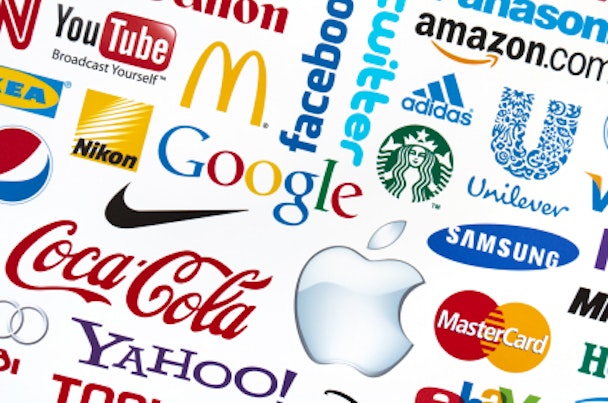It's time to change the way we measure brand value
Effectively measuring the value of a brand has long been a contentious subject among CMOs and analysts. But new ways of interpreting how consumers feel and act can make brand value much more quantifiable, according to dunnhumby's Adam Smith.

Measuring brand value accurately is a hugely important business. Some businesses have the majority of their company value wrapped up in it. Coca-Cola has a market value of $175bn and an estimated brand value of $82bn, so nearly half of Coca-Cola’s company value is invested in a single intangible asset – its brand.
Different measurement companies produce valuations for the same company that can differ by hundreds of billions of dollars. Brand equity is notoriously difficult to quantify because it is often based in part on people’s perceptions of a brand and a promise about quality or performance.
If it wasn’t hard enough already, media fragmentation has exponentially increased the number of potential brand touch points. In particular, digital, and the far reaching speed and potency of social media, has raised the stakes, meaning brand reputations, and therefore brand value, can be won or lost, at scale, in the touch of a screen. The resulting data produced mean clients risk swimming in ever more information and measuring what is available rather than what they should.
Measurement limitations
Existing methodologies to quantify brand value are limited. Typically marketers and researchers consider independent relationships between brand research results and business performance in the aggregate.
To truly calibrate how sales are impacted by relatively small changes in brand perceptions over time – among consumers who buy brands almost habitually – the atomic unit of measurement needs to change from one of aggregation and averages, to the individual.
The necessity to connect brand measurement to sales at respondent level is both crucial and well documented, but challenges have existed in developing high quality single source panels that are both nationally representative and balanced in terms of passively collected sales data and geographical reach.
Catalyst for change
The good news is that things are progressing due to advances in connected data. We can now connect what people feel and think – claimed attitudes, motivations and beliefs about a brand – directly to what they do both in store and online, using nationally representative transactional data, tracked passively. Furthermore, overlaying representative media consumption data reveals relationships to a brand or category relative to channel exposure and preference. It closes the insight loop around what individuals feel and think, with what they see, hear and do.
Not only does this approach more accurately quantify the value of brand perception and preference over time, it does so around common behavioural segments (new, lapsed, loyal brand buyers) that can detail brand performance relative to a point in a customer lifecycle, and which in time could be used to help predict future sales performance.
What we’ve learnt
A big area of focus is in understanding the relationship between brand perceptions and buying behaviour and distilling the factors and pathways that do or don’t ultimately influence sales.
The learnings gained from this approach can be startling. Brand love doesn’t always equal sales, and vice versa, and single source panels can reveal these risks and opportunities. For example, one of our studies found that 23 per cent of a cereal brand’s high spenders had ‘low attachment’ to the brand, which our previous research suggests often leads to a future drop in purchase. Knowing this means the brand can increase engagement to this newly identified high value, ‘at risk’ group.
Conversely, of all consumers who were ‘highly attached’ to a particular soft drinks brand, only 33 per cent were high spenders. Why aren’t more converting to sales? More discreetly, a person may love the brand, drink it when offered, but never actually buy it. But if they love the advertising, share content on Facebook and generate advocacy to a wide circle of friends, then there is still brand value to be measured.
Connecting a range of brand image metrics directly to sales for another leading ‘health’ cereal brand revealed that the combined segment of emotional AND sales loyal consumers were driven more by taste and quality of ingredients than health.
And finally, results for a drinks brand reveal how aggregate metrics hide important nuance. Although average awareness for the brand was flat, for specific respondents who gained top-of-mind awareness, a threefold spend increase was identified, worth millions of pounds, proving in this instance at least that brand fame pays.
Benefits
With this unique insight, brands are now able to directly quantify the benefits of brand-building activity, identify and activate specific opportunity/at-risk consumer groups and inform media planning and measurement.
People respond consistently but behave inconsistently and do the same thing for different reasons.
The important thing is to connect the different data points (how someone feels and thinks, what media they’re exposed to, how they buy and consume) around the same person, so brands can put the right activation plan in place for different audiences to drive engagement and ultimately long-term brand growth. Using single source connected attitudinal, sales and media consumption data, we can see how these consumers are distinct to others – who they are, how they shop, why they’re behaving in this way and how to reach them and talk to them.
New connected brand measurement techniques offer an exciting new era in which CMOs truly possess the evidence to prove their value and increase influence in defining long-term business strategy.
Adam Smith is head of media strategy at dunnhumby
